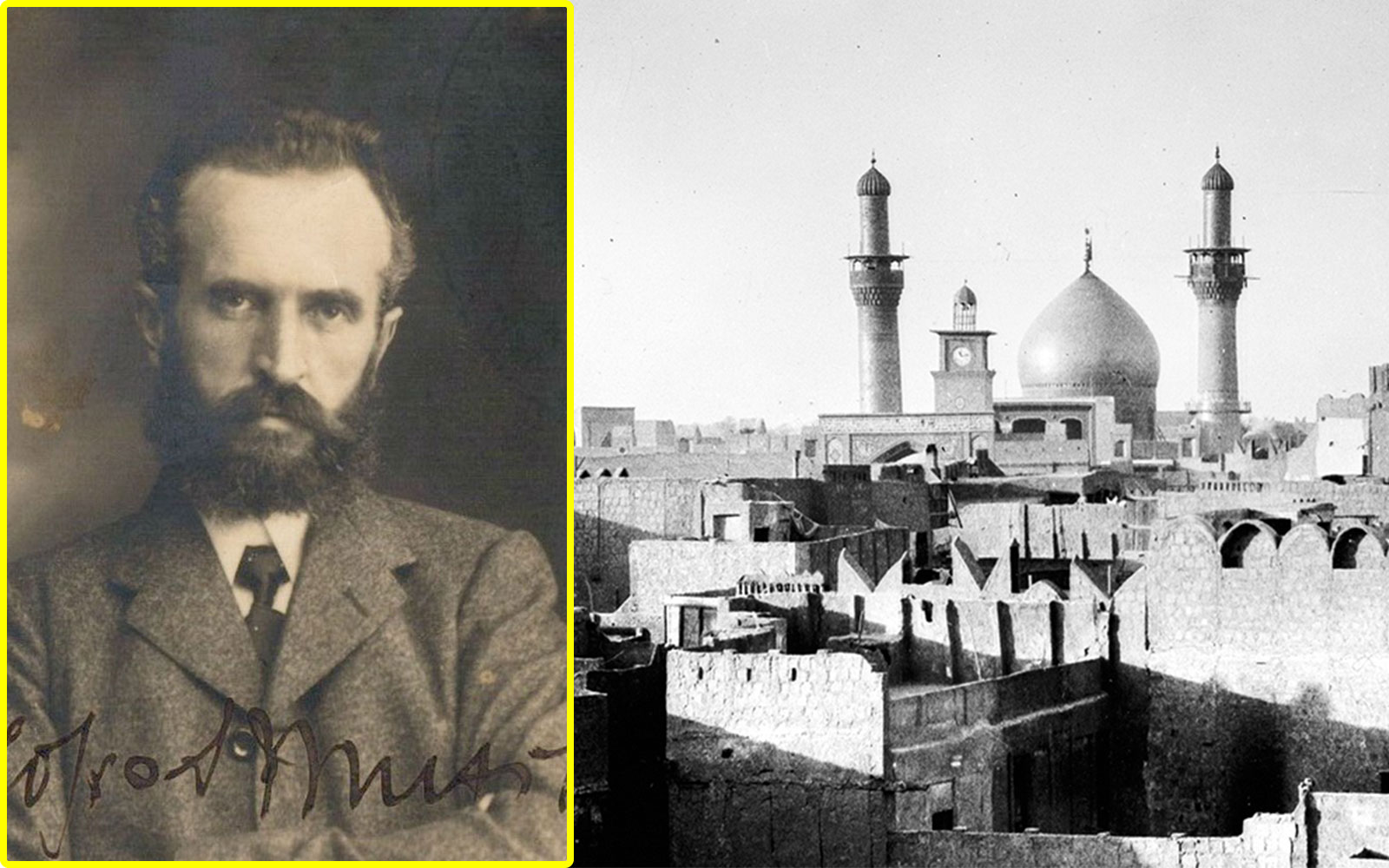During his visit to the holy city of Karbala in 1912, the traveler Musel has written what he saw in the city, describing the topography of the land, as he viewed the realistic images of the social and economic life of the villagers and the countryside's residents.
He said that the Euphrates river has a width of about one kilometer, and that many buffaloe animals were moving in it. The village people were relocating from one island to another (using leather boats) and that while he was traveling with his companions, he saw camels and donkeys transporting pilgrims and tourists to the holy shrine of Imam Hussein "peace be upon him" specifically from the area of "Twairij". The fare of transportation at the time was between (15-20) piasters.
After Musel and his companions pass the "Majahil" plains, it was easy to see the "Sedira" and "Sabkhan" fields on the west side, then they reached "Al-Nukhailah" fortress where they stayed for a while. Next to this fortress were three smaller fortresses that he described as a "rest station" for pilgrims and tourists.
After the "Al-Nakhilah" fortress, there is "Hor Braz" lake, and to the east of it, there are several villages such as Al-Ta'bouri, Al-Hinidiah, Al-Zubailiyah and Sulaymaniyah. To the west of it, there are barren plains known as "Meliha" and "Tafhat", while to the north western part, there was the front yard of Karbala's massive orchards, as for the western part, there was a plateau that divided into two parts called "Abu Rasin" which was filled with primitive factories for making plaster.
According to Musel, the topography around Karbala city is not homogenous but rather different for having marshes, plains and undulating lands.
He also mentioned that the main profession practiced by the residents of Karbala at that time is the plaster industry.
The traveler Musel has later witnessed the "Hindi" palace which lies in a plain called "Hujayma", and when he reached the depth of the city, he noticed that its streets were flooded because of the collapse of the Husseiniya dam back then.
It was clear that the holy city of Karbala was suffering the lack of services regarding the maintenance of river dams, which made it at the mercy of the flood of the Husseiniya river at any time.
At last but not least, Musel has described the holy shrines of Imam Hussein and his brother Al-Abbas "peace be upon them", as he described the first one as "the main destination" that was located in the western part of the city, while eastern part of it had embraced the second holy shrine.
Source:
The Karbala's Comprehensive Civilizational Encyclopedia- The History Department: Karbala Center for Studies and Research Vol. 3.

